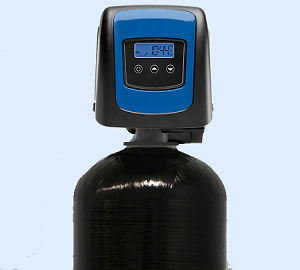NextSand Sediment Filter
Untreated water from lakes, rivers and wells often has high turbidity (or cloudiness) due to excessive particulate contamination. Turbidity in your water is similar to smoke in the air. You might not be able to see the individual particles, but ingesting or inhaling them still poses a significant health risk. For this reason, turbidity is a key determinant of overall water quality. Reducing high turbidity when present is a priority in water treatment.
If you need to remove sand, silt, sediment, turbidity, and other particulates from your water, the NextSand system is the most efficient and effective solution.
NextSand media is the world’s most advanced turbidity reduction media. It provides a much finer filtration than traditional sand and multi-media filters. NextSand requires less backwash rate and volume, has higher service flow rates for a given volume of media, and it costs less.
 The Features of the NextSand Sediment Filter:
The Features of the NextSand Sediment Filter:
● Large Easy to Read Backlit Display
● Battery Back-Up for Power Outages
● Super Efficiency
● High Flow Valve Design
● Simple Programming
● Low Maintenance
The Sediment Filter Process:
NextSand offers a single bed media made from high purity Clinoptilolite, which delivers superior performance over conventional filter sands or multimedia, and at a lower cost. The material is mined in Western USA and then highly processed and graded. The resulting product is hard and stable with a large surface area, micro-porous character, and surface micro-crystals which make it an ideal filter media. NextSand has an exceptional filtration rating — less than 5 micron compared to 12 to 15 micron for multimedia. It also has a higher flow capacity, typically three to four times that of multimedia. This high flow rate means a greater performance can be achieved from existing vessels when upgraded with NextSand, and new applications require smaller vessels to achieve the same results. Filtration through the entire depth of the media bed provides more than twice the capacity of multimedia filtration. It has a higher dirt holding capacity, so it requires less frequent backwashing, leading to reduced downtime and lower water use. The lighter weight and lower volume requirement mean lower production and shipping costs, and longer life. The media isn’t consumed in the filtration process; a simple periodic backwash, performed automatically by the system, will keep the media clean and operating efficiently for five years or more.
